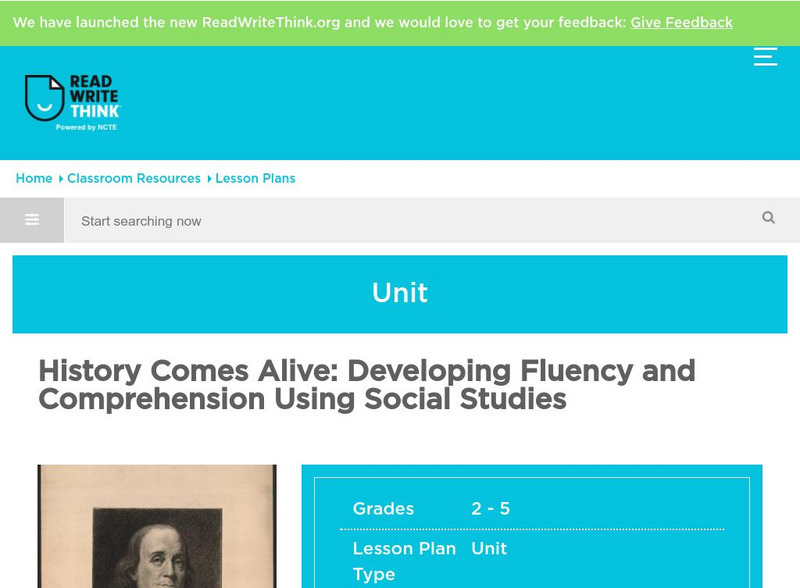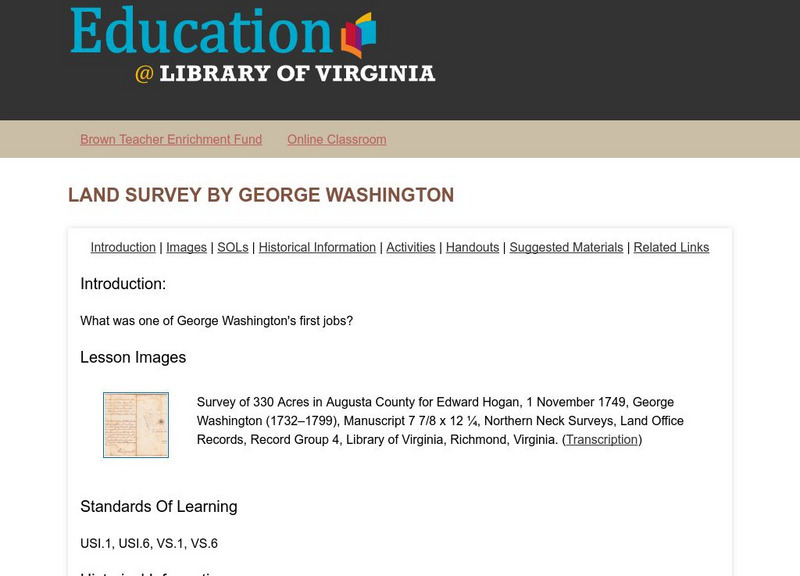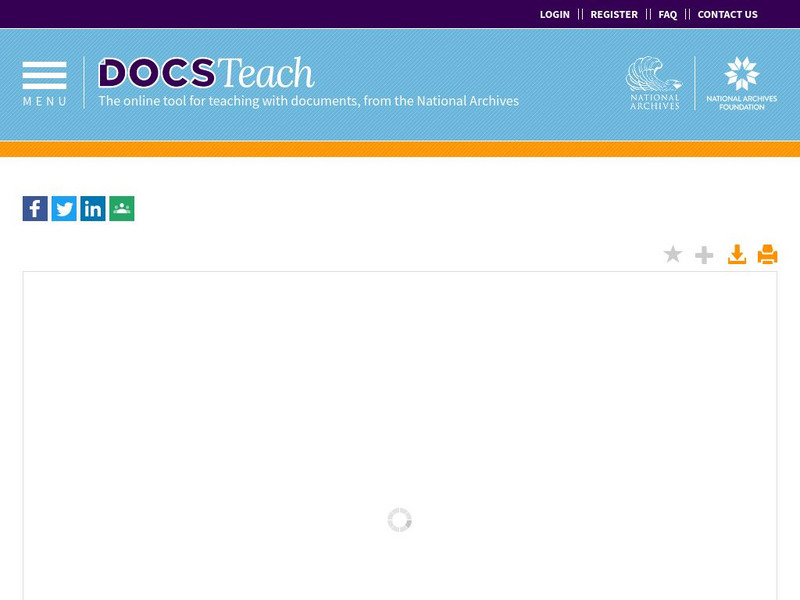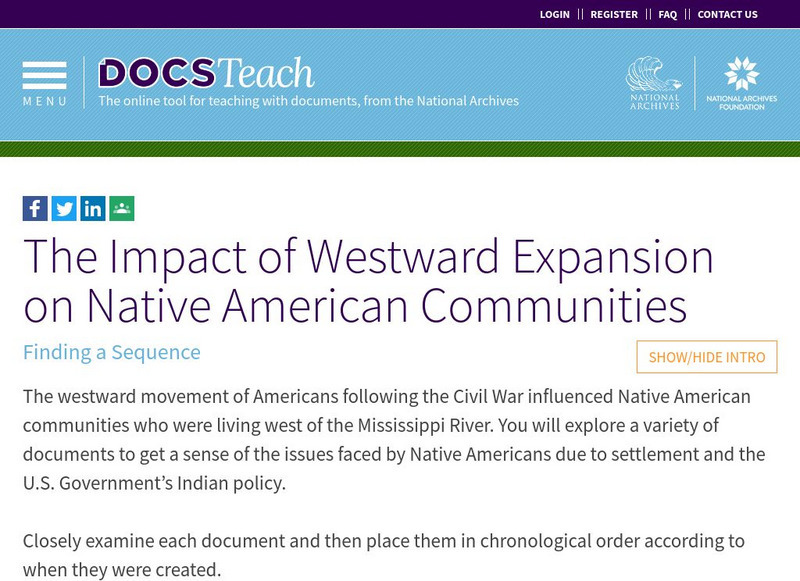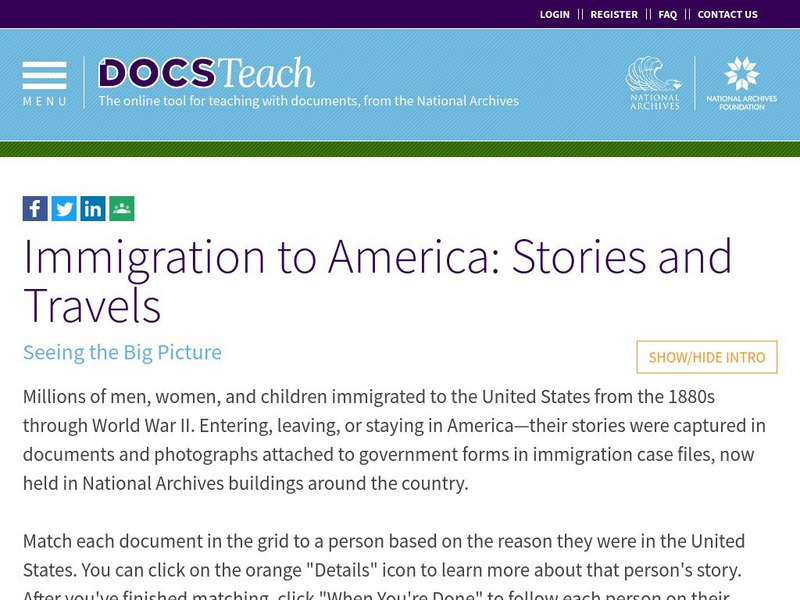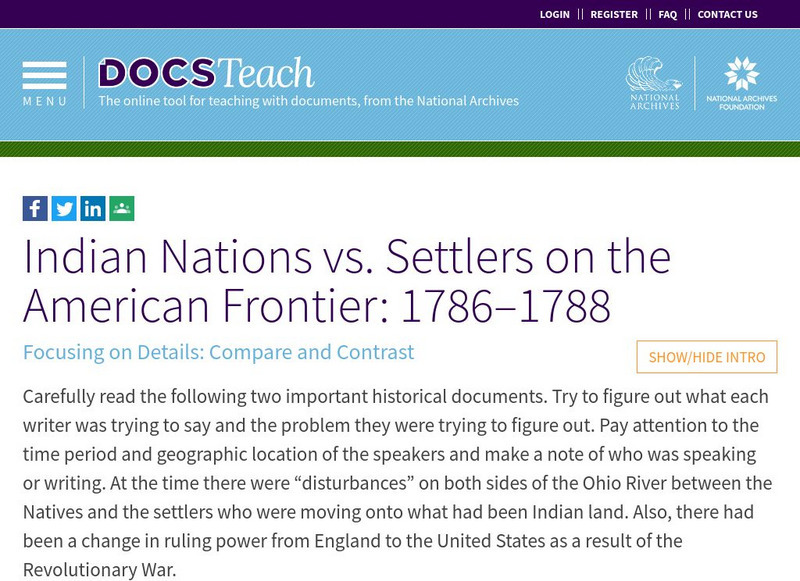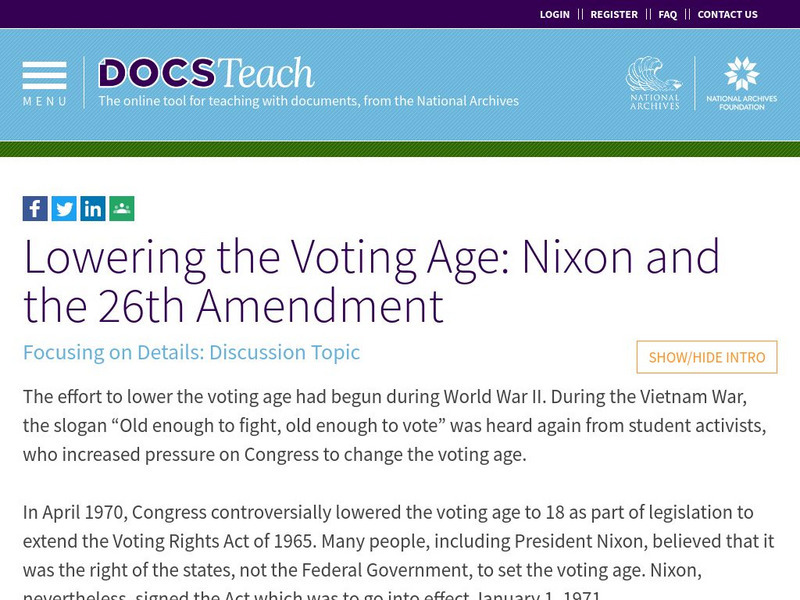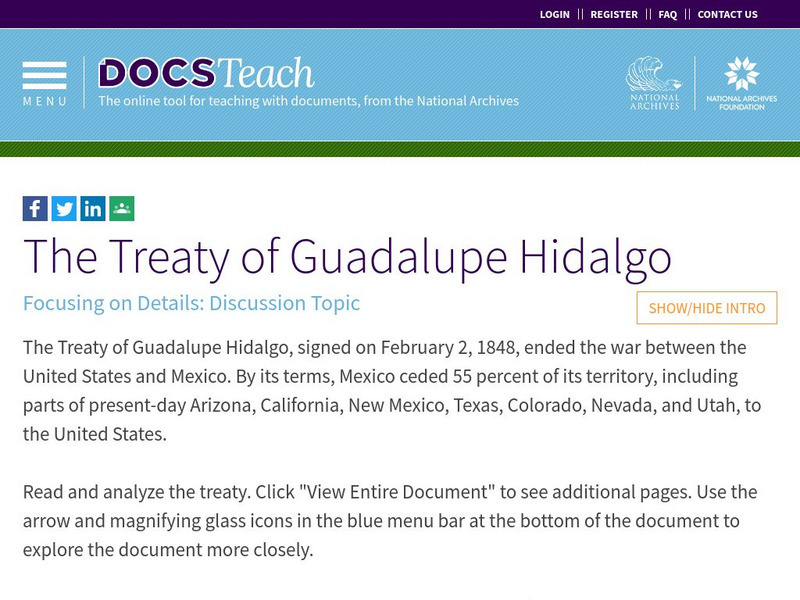ReadWriteThink
Read Write Think: History Comes Alive: Developing Fluency and Comprehension
Let the power of imagination and inference serve as a "time machine" to bring Benjamin Franklin into the classroom! History and science come to life in a dialogue with Franklin the inventor, developed through lesson activities that...
University of California
Uc Berkeley Library: Finding Historical Primary Sources
Got a research project? Read this site from the UC Berkeley Library. A great guide on finding the best primary sources for your research. Defines both narrow and broad ideas of primary source, links to online archives of primary sources,...
Library of Virginia
Virginia Memory: Tobacco Counterblast
In this lesson, students look at why King James I thought that smoking tobacco was a dangerous habit.
Library of Virginia
Virginia Memory: The Women's Land Army and World War Ii Posters
In this lesson, middle schoolers look at some ways that women contributed to the war effort during WWII.
Library of Virginia
Virginia Memory: The Battle of Yorktown Sort It Sets
In this lesson, students examine why the Battle of Yorktown was a turning point in the Revolutionary War using primary sources.
Library of Virginia
Virginia Memory: Petition of the Meherrin Indians
A lesson exploring the steps taken by the Meherrin Indians in Virginia to try to protect their lands from encroaching colonists
Library of Virginia
Virginia Memory: Petition of Phillip Gowen
This lesson explores the practice of indentured servitude in colonial Virginia. Students examine a petition by Phillip Gowen, an African American indentured servant, who asked the governor of Virginia to release him from servitude in 1675.
Library of Virginia
Virginia Memory: Nova Britannia
In this lesson, students learn about how early promoters advertised the Virginia colony.
Library of Virginia
Virginia Memory: Nat Turner Rebellion
In this lesson, young scholars examine the impact Nat Turner's Rebellion had on how enslaved and free African Americans were treated in Virginia.
Library of Virginia
Virginia Memory: Manumission Petition for James Lafayette
For what service during the American Revolution was James Lafayette awarded his freedom? Students investigate what events led to James Lafayette, a slave, winning his freedom.
Library of Virginia
Virginia Memory: Land Survey by George Washington
What was one of George Washington's first jobs? American history tends to focus on George Washington as a leader of the Continental army during the Revolution, and as our nation's first president. Less emphasis has been devoted to...
Library of Virginia
Virginia Memory: Virginia Ordinance of Secession
In this lesson, students learn what the Virginia Ordinance of Secession declared.
US National Archives
Docsteach: The Voting Record of the Constitution
In this activity, students will analyze a primary source document to find relevant historical data and measure the degree of agreement and disagreement during the Constitutional Convention.
US National Archives
Docsteach: The Big Ideas of the u.s. Constitution
In this activity students will identify and define seven key ideas contained in the U.S. Constitution by making matches from the grid. They will then analyze documents that demonstrate each big idea in action.
US National Archives
Docsteach: Reasons for Westward Expansion
Students will examine a variety of documents that reference reasons why Americans living in the East migrated west of the Mississippi immediately before, during, and right after the Civil War. Documents cover the mining industry, new...
US National Archives
Docsteach: The Impact of Westward Expansion on Native American Groups
In this activity, learners will examine the impact of westward expansion and settlement on Native American groups following the Civil War. Students will explore a variety of documents to get a sense of the issues faced by Native...
US National Archives
Docsteach: Immigration to America: Stories and Travels
This activity asks students to match documents to individuals based on the reasons these people came to and were living in the United States. The photographs and documents are attached to government forms in some of the millions of...
US National Archives
Docsteach: A Call to Action: Responses to Civil Rights Violations
For this activity, students will be introduced to the civil right activities of Harry T. Moore, former schoolteacher and National Association for the Advancement of Colored People (NAACP) official in Florida in the 1940s, and analyze the...
US National Archives
Docsteach: Indian Nations vs. Settlers on the American Frontier: 1786 1788
In this activity, students will compare and contrast two documents from the Revolutionary period written by 1) a combined group of Native American tribes and 2) an American territorial governor, Arthur St. Clair. Students will analyze...
US National Archives
Docsteach: Landing a Man on the Moon: President Nixon and the Apollo Program
This activity chronicles the Space Race from President Kennedy's call to land on the Moon until Apollo 17 - the last lunar Mission, placing particular emphasis on President Nixon's role in the space program.
US National Archives
Docsteach: Lowering the Voting Age: Nixon and the 26th Amendment
This activity encourages learners to think critically about the history and importance of the 26th Amendment, that granted the right to vote to American citizens aged eighteen or older.
US National Archives
Docsteach: Civil Rights Act, 1964 & Equal Employment Opportunity Commission
This activity asks students to read, analyze, and summarize Title VII of the Civil Rights Act of 1964 that established the Equal Employment Opportunity Commission.
US National Archives
Docsteach: Analyzing a Letter to Congress About Bloody Sunday
In this activity, students will focus on a letter written to Congress about Bloody Sunday in Selma, Alabama. Students will determine that, due to television coverage, the author, Mrs. Jackson, was very aware of the events that day even...
US National Archives
Docsteach: The Treaty of Guadalupe Hidalgo
The Treaty of Guadalupe Hidalgo, which brought an official end to the Mexican-American War, was signed on February 2, 1848. This activity asks young scholars to read and analyze the treaty to explain the overall message and tone.
